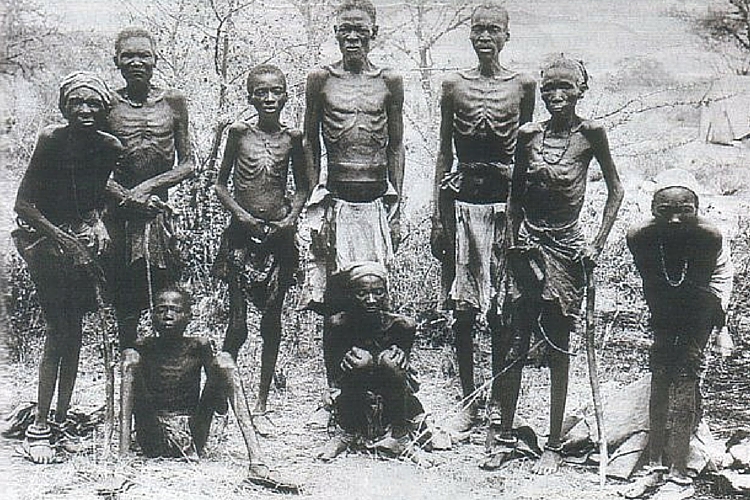
The Herero and Nama Genocide in Namibia
Bismarck assembled leaders of Europe countries and the USA in 1884-5 for what is now known as the Berlin Conference, to settle disputes about the colonies. Ironically, there were no African people invited. After the conference, Germany’s colonies were South-West Africa (Namibia), Togoland now Togo, the Cameroons now Cameroon and German East Africa (Tanzania). However, the Africans did not peacefully accept colonialism.
One of the most famous wars of resistance against the Germans was carried out by the Herero and Nama people in what is now present day Namibia. German treatment of the Herero and Nama people was particularly brutal. Thousands of Herero were shot dead during the Herero war in 1905. After the war, thousands of Herero people were driven into the Omaheke desert where they died of thirst. Due to the brutal tactics of the infamous General von Trotha, by 1907 almost 80% of the Herero and 50% of the Nama people had been killed. It is estimated that 65,000 Herero and 10,000 Nama were killed by the Germans.
I shall destroy the rebellious tribes by shedding rivers of blood and money- General von Trotha
Germany lost its colonies after World War I and Namibia became a colony of South Africa. South Africa occupied the German colony of South-West Africa during World War I and administered it as a mandate until after World War II, when it annexed the territory. In 1966 the Marxist South-West Africa People’s Organization (SWAPO) guerrilla group launched a war of independence for the area that became Namibia, but it was not until 1988 that South Africa agreed to end its administration in accordance with a UN peace plan for the entire region. Namibia has been governed by SWAPO since the country won independence in 1990. Hifikepunye Pohamba was elected president in November 2004 in a landslide victory replacing Sam Nujoma who led the country during its first 14 years of self rule. Pohamba was reelected in November 2009. Namibia officially won its independence on March 21, 1990.
Namibia’s population is about 87.5% black, 6% white and 6.5% mixed race. About 50% of the population belong to the Ovambo tribe and 9% to the Kavangos tribe; other ethnic groups include Herero 7%, Damara 7%, Nama 5%, Caprivian 4%, Bushmen 3%, Baster 2%, Tswana 0.5%.



1 Comment
by B.M.Sanyand
White people are criminals and i can t understand why we still have their Grand and great grand children living in our lands with out justice, some one get to pay. No justice no peace.
Comments are closed.